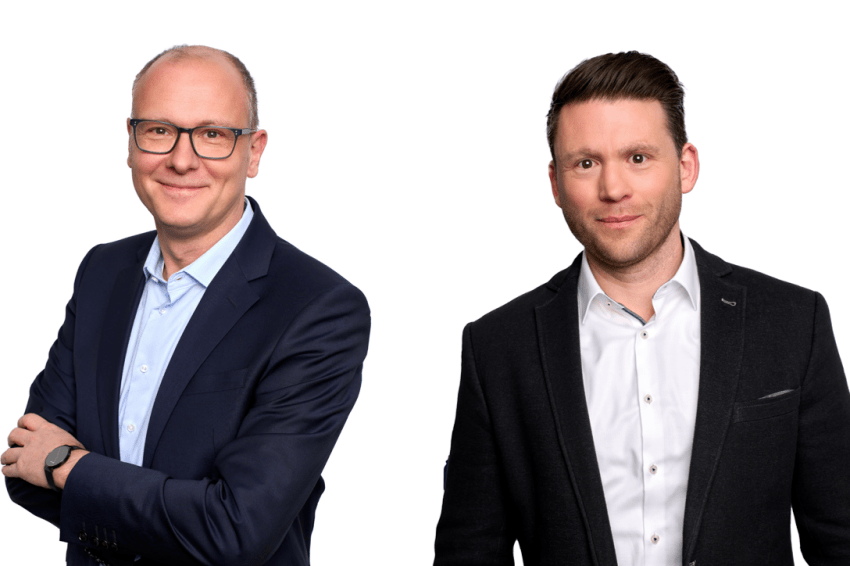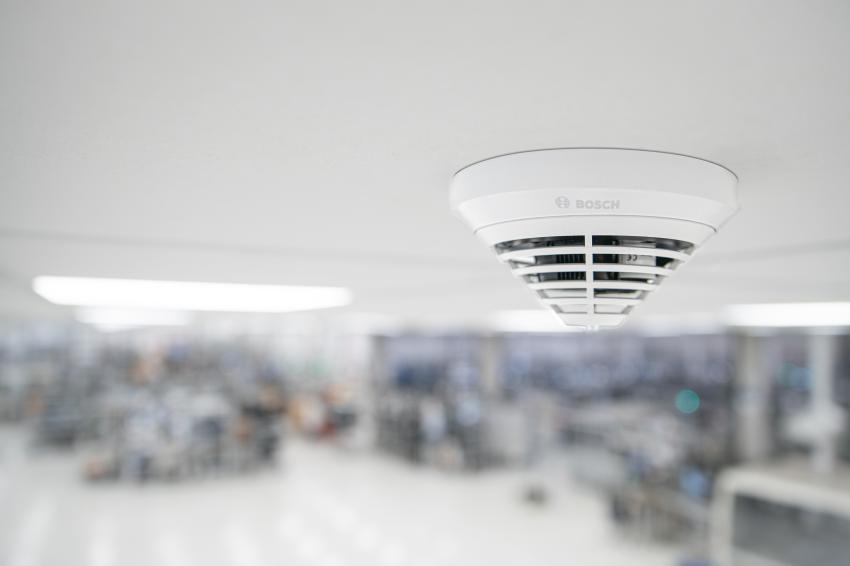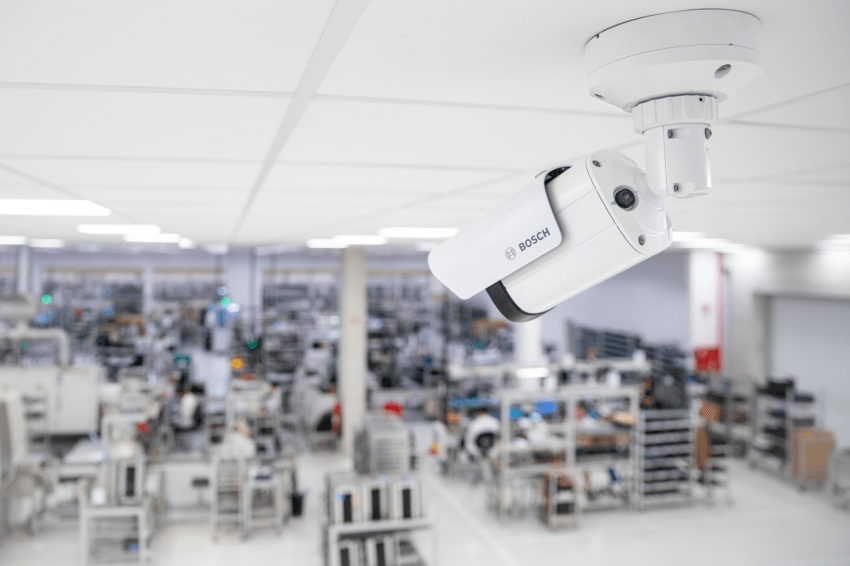The Bosch Approach to Protecting Life and Assets
GIT SECURITY: Can you give us an overview about the Bosch portfolio of fire detectors and can you explain what you place particular emphasis on when developing new fire detectors?
Sebastian Wehr: When it comes to fire detection, reliability should be the first focus. A detector must work when it has to work. If there is a real fire, a fast reliable detection is key to protect people and assets while avoiding annoying and costly false alarms. To ensure the highest reliability, we rely on a series of technology. We use dual ray technology, and Intelligent Signal Processing (ISP) for the distinction of visible disturbance values such as vapor, steam and cigarette smoke, as well as specific features like eSmog. This feature provides robustness against invisible interference such as mobile phones and WiFi. One trend in the industry is certainly to use multi-sensor technology to further improve detection capabilities. We recommend the multi-sensor approach for demanding environments. Two or more sensors combined in one device can increase the false-alarm stability and, at the same time, make a system more robust.
In addition to reliability, when we are developing and defining our fire detection portfolio, we give particular importance to ease of installation and handling as well as flexible application options. The users should benefit from easy installation, maintenance, and durability.
In the core of our offering are the Avenar detector 4000 series, a flexible series of nine detectors for both manual and automatic addressing systems. They are available in single, dual and multi-sensor versions for specific applications and are equipped with intelligent signal processing based on more than 4.000 fire patterns to deliver highly reliable detection performance.
Speaking of multi-sensor technology, carbon monoxide (CO) fire detectors can be better suited to applications where other fire detection techniques are prone to false alarms, i.e. due to dust, steam, and cooking vapors. Does Bosch offer this option as part of your portfolio?
Sebastian Wehr: The latest member of the Avenar 4000 family is a detector with an integrated CO gas sensor according to the new EN 54 regulations. This new detector offers a new carbon monoxide sensor, increasing its fire and smoke detection and alarm capabilities in accordance with the forthcoming EN54 standards. The new FAP-425-DOTCO-R features integrated multi-sensors. As with the rest of the Avenar detector 4000 Series, FAP-425-DOTCO-R includes combined optical and thermal sensors but also an additional specialized sensor for rapid detection of carbon monoxide being a combustion gas that develops at an early stage of fire. This means it adheres to the upcoming EN 54 standards requiring the monitoring of CO concentrations for premises in healthcare, manufacturing industries and in parking lots.
You have introduced a series of ultra-flat design detectors. What is the purpose of these products?
Sebastian Wehr: These almost invisible detectors have a virtual optical chamber inside the device and as a result, the Smoke Detector 500 Series does not stick out of the ceiling. The smooth surface does not gather the usual visible dirt in rooms with high dust build-up. So, it offers high reliability, and it is easy to clean. On top of that, it saves service time and costs. The level of dirt build-up is continuously measured. A trouble signal indicates when a unit needs to be cleaned. The ultra-modern, flat design is also advantageous for interiors with high aesthetic requirements. According to the customer‘s requirements, the detector can be ordered with different colored rings, so that it almost blends into the space.
On top of traditional methods for smoke and fire detection, you have introduced Aviotec, the system for video smoke and fire detection. For those who do not know Aviotec yet, how does it work and for what kind of applications is the system best fitted?
Sören Wittmann: When you are trying to keep large areas safe, as is the case in industry and in warehouses, it does not take long for individual, point-type smoke detectors to reach the limits of what they can do. The reason is that smoke rises due to thermal lift, and the higher it rises, the more it mixes with the ambient air and becomes diluted, colder, and slower. At some point, the temperature of the smoke will equalize with the ambient temperature, and it will stop moving through the air. Things are very different when you are using video-based fire detection like with our Aviotec system. Smoke or flames that occur within the visual range of the fire detection camera become visible in the image almost instantaneously. The camera can detect the fire at its source in a matter of seconds. That saves valuable time in the response chain and this early detection can help minimize damage. This is an incalculable advantage when you are talking about the fire safety of storage areas or expensive machinery that is essential for an organization’s very survival.
Can you explain to us how the system works?
Sören Wittmann: Flames and smoke have certain characteristics. For instance, flames have a typical color, brightness, and flicker in specific frequencies. By contrast, smoke is a semi-transparent substance. It rises within an image and obscures the background, albeit not completely. It is very turbulent, varies in density, and is white during the early stages of a fire but becomes increasingly darker as the seat of the fire gets hotter. Our Aviotec cameras detect and evaluate all these characteristics. Aviotec currently uses more than 20 algorithms to analyze and detect the different ways that flames and smoke can present. When a display device is being used, for example in a company’s security office, then the alarms can be quickly and reliably verified by an authorized individual looking at a live video. That person can very quickly establish whether it’s a false alarm or a genuine incident.
Aviotec is a proven solution and we have covered several application stories in GIT SECURITY. Can you tell us a little bit more about the latest version of Aviotec that will be introduced to the market in September?
Sören Wittmann: The biggest step forward is that for the first time the Aviotec system is completely AI-driven with deep learning. The new AI-based algorithms will lead to a higher robustness and will enable new future use cases.
What are the most significant improvements of the Aviotec 8000i IR system?
Sören Wittmann: This new Aviotec system comes in a one product solution. The software and the camera, with an improved picture quality and a resolution of over 4 Megapixel, is included, as is the IR lighting, the lens and the IP67 housing. The camera update enables a motorized adaption of the focal length without manual adjustments and the sensor is more sensitive with a better image quality. The user does not need to buy accessories anymore and the camera system can be connected to a control panel like a standard fire detector. Two output relays for ‘alarm’ and ‘trouble’ are included and potentially enable UL/FM approval in the future.
How future-proof is the new camera concept?
Sören Wittmann: Already now, we see a strong demand for reliable solutions in industrial applications in all kinds of vertical markets like e.g in transportation, where solutions for airports or hangars and railways are needed. There is a strong demand for applications in warehouses, for parking lots and with the strong growth in eMobility, video-based fire detection will become more and more important. In all of these areas the system needs to be very flexible and ready for changes in the environment. With our Ai-driven approach and the deep learning capabilities, our system is ready for the future. Another aspect is the increasing occurrence of international regulations for video-based fire detection. The regulations and the future interpretation of the regulations demand a system like our new Aviotec 8000i IR system. For regular updates we offer the free-of-charge download of the latest firmware versions to keep your system at the best possible level.













